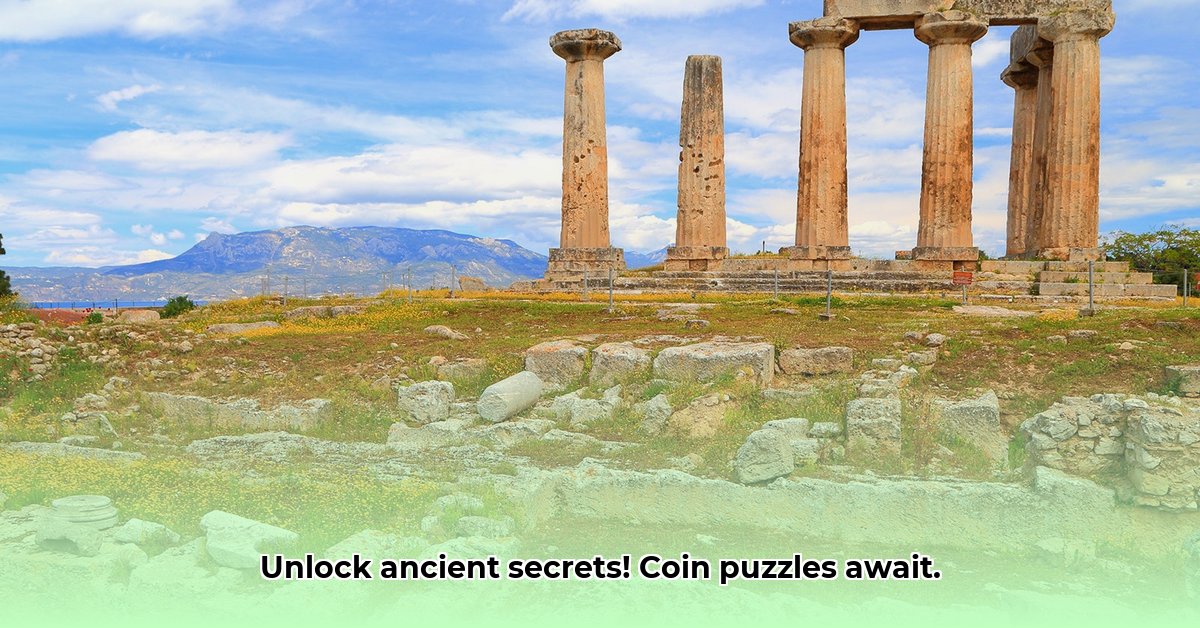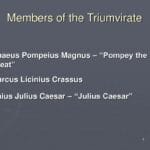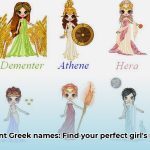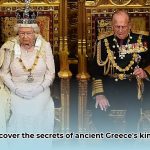Have you ever held a coin and wondered about its journey through time? Ancient Greek coins are more than just relics; they’re miniature historical documents, whispering tales of gods, wars, and everyday life. This guide goes beyond simple identification, inviting you to embark on a numismatic adventure. We’ll explore the fascinating world of ancient Greek coinage, deciphering their iconography, understanding their economic significance, and even using them as clues to solve captivating crossword puzzles. Whether you’re a history enthusiast, a puzzle solver, or simply curious, prepare to unlock the secrets embedded within these tangible pieces of the past. For more on Greek symbols, check out this helpful resource: Greek Symbols.
Ancient Greek Coin Crossword Puzzles: A Gateway to the Past
Deciphering History Through Numismatics
Imagine holding a small, worn coin from ancient Greece – a tangible connection to a civilization that shaped our world. These aren’t just pieces of metal; they are miniature works of art and vital historical artifacts. Solving ancient Greek coin crosswords is like cracking a code, revealing insights into ancient culture, mythology, and economics. But how do we turn these intricate puzzles into a journey through time? Let’s delve into the world of ancient numismatics and learn how to decipher the clues hidden within these coins.
Navigating the Ancient Greek Monetary System: A Currency Crash Course (Obol, Drachma, Stater, Talent)
Ancient Greece boasted a complex monetary system, with coins of varying values circulating throughout its city-states. The most common denominations included the obol, drachma, stater, and, for larger transactions, the talent. An obol, the smallest unit, was roughly equivalent to a day’s wage for a common laborer. Six obols made a drachma, which was a more substantial amount. The stater, typically worth two drachmas, served as a standard for larger transactions. Gold coins, though less common, held higher value and were often used for trade or payment of mercenaries. Understanding the relationships between these coins is essential for solving crosswords and understanding the ancient Greek economy.
Iconography: Decoding the Visual Language of Ancient Greek Coins (Gods, Heroes, Symbols)
The images stamped on ancient Greek coins are far from arbitrary; they form a visual language that reveals much about the beliefs, values, and political agendas of the time. Gods and goddesses, such as Zeus, Athena, and Apollo, frequently adorned coins, reflecting the importance of religion in ancient Greek life. Mythological heroes like Heracles and Achilles also made appearances, embodying courage and strength. But beyond the grand figures, a wealth of symbols offer subtler clues. The owl, symbol of wisdom, identified Athenian coins, while the dolphin signified maritime power. Deciphering these images allows us to understand the messages that these coins were broadcasting.
City-States and Coinage: A Patchwork of Currencies (Athens, Corinth, Syracuse)
Ancient Greece was not a unified nation but a collection of independent city-states, each with its own unique identity and, often, its own coinage. Athenian coins, known for their distinctive owl design, circulated widely throughout the Greek world. Corinthian coins, frequently featuring Pegasus, reflected the city’s equestrian heritage and trading prowess. Syracuse, a powerful city in Sicily, produced magnificent silver coins depicting local deities and agricultural symbols. Recognizing these regional differences is crucial for solving coin-related crosswords and appreciating the diversity of ancient Greek culture.
Assessing Authenticity: Separating Genuine Artifacts from Modern Fakes (Patina, Style, Metal Composition)
The allure of ancient Greek coins has, unfortunately, led to the creation of numerous forgeries. Discerning genuine artifacts from modern fakes requires careful observation and, in some cases, expert analysis. Key indicators of authenticity include a natural patina, the accumulated effect of centuries of exposure to soil and air. The style of the coin should be consistent with the known artistic conventions of the period. The metal composition of the coin can also provide clues, as ancient coins were typically made from specific alloys. Consulting with reputable numismatists or using specialized authentication services can help ensure that you’re handling a genuine piece of history.
Mastering the Crossword: Strategies for Success (Historical Context, Numismatic Resources)
Tackling ancient Greek coin crosswords requires a blend of historical knowledge, numismatic understanding, and puzzle-solving skills. Start by carefully analyzing the clues, paying attention to keywords like “city-state,” “god,” or “coin type.” Research the historical context, familiarizing yourself with the major figures, events, and symbols of ancient Greece. Utilize numismatic resources like online databases, coin catalogs, and scholarly articles to identify specific coins and their attributions. Combine your knowledge of history, numismatics, and crossword strategies to unlock the solutions and deepen your appreciation for ancient Greek coinage.
Essential Tools: Building Your Numismatic Knowledge Base (Museums, Online Resources, Books)
To further your exploration of ancient Greek coins, consider these valuable resources:
- Museums: The British Museum, the Metropolitan Museum of Art, and the American Numismatic Society boast extensive collections of ancient Greek coins, offering opportunities for close study and appreciation.
- Online Resources: Websites like the Classical Numismatic Group (CNG) and the American Numismatic Society (ANS) provide online databases, educational materials, and research tools.
- Books: Standard references include “Greek Coins and Their Values” by David R. Sear and “Ancient Greek Coins” by G.K. Jenkins.
Solving ancient Greek coin crosswords is more than just a game; it’s a portal to the past, connecting us with the art, culture, and history of ancient Greece.
Dating Ancient Greek Coins: A Journey Through Time Based on Art and Wear
Key Takeaways:
- Dating ancient Greek coins is an art that combines historical knowledge, numismatic expertise, and careful observation.
- Iconography provides crucial clues, reflecting the artistic styles and cultural trends of different periods.
- Wear patterns offer insights into a coin’s circulation history and potential age.
- Inscriptions and metallurgical analysis provide additional data points for accurate dating.
- Expert resources and a critical eye are essential for navigating the complexities of ancient coin dating.
Unlocking the Timeline: The Art and Science of Ancient Coin Dating (Periods, Styles)
How can we unlock the secrets of an ancient Greek coin’s past just by looking at it? The process of dating these artifacts blends art, science, and a little bit of detective work. By examining a coin’s iconography, wear patterns, and other characteristics, we can piece together its timeline and place it within the broader context of ancient Greek history. Let’s explore the techniques employed to accurately date ancient Greek coins.
Iconography: A Visual Narrative of Time (Archaic, Classical, Hellenistic)
Ancient Greek coins are adorned with a rich array of images, from gods and heroes to animals and symbols. The artistic style used to depict these images evolved over time, reflecting broader trends in Greek art and culture. The Archaic period (c. 700-480 BCE) saw stylized and somewhat rigid figures, while the Classical period (c. 480-323 BCE) embraced naturalism and idealized forms. The Hellenistic period (c. 323-31 BCE) brought greater emotional expression and dynamic compositions. By recognizing these stylistic shifts, we can narrow down the potential date range of a coin.
The Story in the Scratches: Reading Wear and Tear (Condition, Circulation)
A coin’s physical condition provides valuable clues about its age and history. Coins that circulated widely for extended periods will exhibit significant wear, with details softened and inscriptions partially worn away. Conversely, coins found in hoards or carefully preserved may show minimal wear, suggesting that they were relatively new at the time of burial or storage. However, the absence of wear does not necessarily mean the coin is a modern forgery, as some ancient coins were indeed preserved in pristine condition.
Combining the Evidence: Putting the Pieces Together (Context, Comparison)
Accurate dating requires a holistic approach, combining insights from iconography, wear patterns, and other available evidence. For example, a coin featuring a particular ruler or event can be dated to the period of that ruler’s reign or the aftermath of that event. Comparing the coin to similar examples in museum collections or numismatic catalogs can further refine the dating process.
Inscriptions and Markings: A Deeper Dive (Legends, Mint Marks)
Many ancient Greek coins bear inscriptions, or legends, that provide valuable information about their origin and date. These inscriptions may include the name of the issuing city-state, the name of a ruler or magistrate, or a brief motto or symbol. Mint marks, small symbols indicating the mint where the coin was produced, can also aid in dating, as different mints operated during specific periods.
Advanced Techniques: Unlocking Further Secrets (Metallurgy, Analysis)
In some cases, advanced analytical techniques can provide additional insights into a coin’s composition and age. Metallurgical analysis can determine the precise alloy used to create the coin, which can be compared to historical records to verify its authenticity and date. Radiocarbon dating, while not directly applicable to metal coins, can be used to date organic materials found in association with the coin, providing a contextual timeframe.
Navigating the Pitfalls: Avoiding Misidentification (Forgeries, Copies)
The world of ancient Greek coins is not without its challenges, as forgeries and copies abound. Recognizing the telltale signs of a fake requires careful study and a critical eye. Forgeries often exhibit unnatural surfaces, poorly defined details, and incorrect metal compositions. Consulting with experienced numismatists or using professional authentication services can help avoid costly mistakes.
Ancient Greek Coin Iconography: Exploring Regional Identity through Symbols
Key Takeaways:
- Ancient Greek coin iconography is a rich visual language, reflecting the diverse identities and values of individual city-states.
- Regional variations in coinage provide insights into the political, economic, and cultural landscape of ancient Greece.
- The symbols and images on coins convey messages about religious beliefs, civic pride, and economic activities.
- Studying coin iconography enhances our understanding of ancient Greek history and culture.
- A combination of historical knowledge, numismatic expertise, and careful observation is essential for interpreting coin imagery.
Decoding the Message: Coinage as a Form of Communication (Symbols, Imagery)
Ancient Greek coins were more than just a means of exchange; they were powerful symbols of identity, broadcasting messages about the values, beliefs, and aspirations of the issuing city-state. The images stamped onto these small metallic discs served as a form of visual communication, conveying information about religious beliefs, civic pride, and economic activities. By studying the iconography of ancient Greek coins, we can gain a deeper understanding of the diverse cultures and political landscapes of the ancient world.
Regional Styles: A Tapestry of Greek Identity (Athens, Corinth, Ephesus)
The coinage of ancient Greece was characterized by a remarkable degree of regional variation, with each city-state developing its own distinctive style and favored symbols. Athenian coins, for example, typically featured the owl of Athena, the city’s patron goddess, along with an inscription identifying the issuing authority. Corinthian coins often depicted Pegasus, the winged horse associated with the city’s mythical founder, Bellerophon. Ephesian coins were known for their image of the bee, a symbol of the city’s prosperity and connection to the natural world. The coin iconography reflects the diverse identities and values of individual city-states.
Religious Symbols: Divine Influence on Coinage (Gods, Goddesses, Myths)
Religious beliefs played a central role in ancient Greek life, and this is reflected in the iconography of coins. Gods and goddesses were frequently depicted, often with their associated symbols and attributes. Zeus, the king of the gods, might be shown holding a thunderbolt or seated on a throne. Athena, the goddess of wisdom and warfare, was often depicted with her helmet, shield, and owl. Mythological creatures, such as griffins and centaurs, also appeared on coins, evoking the rich tapestry of Greek mythology.
Civic Emblems: Symbols of City Pride (Animals, Plants, Landmarks)
In addition to religious symbols, ancient Greek coins often featured civic emblems that represented the city’s identity and values. Animals, such as lions, bulls, and eagles, were common symbols of power and strength. Plants, such as olive trees and grapevines, symbolized agricultural prosperity. Landmarks, such as temples and harbors, represented the city’s architectural achievements and economic activities.
Interpreting the Symbols: Unlocking the Meaning (Context, Research)
Interpreting the symbols on ancient Greek coins requires a combination of historical knowledge, numismatic expertise, and careful observation. Consulting with numismatic catalogs, scholarly articles, and museum collections can provide insights into the meaning of specific symbols and their significance within the context of ancient Greek culture.
Practical Applications: Connecting to History (Collecting, Education)
Studying ancient Greek coin iconography offers a unique opportunity to connect with history in a tangible and engaging way. Collecting ancient coins can be a rewarding hobby, allowing enthusiasts to assemble a personal museum of ancient artifacts. Educators can use ancient coins as teaching tools, bringing history to life for students and fostering an appreciation for the rich cultural heritage of ancient Greece.
Ancient Greek Coin Authentication: A Critical Guide to Spotting Fakes
Key Takeaways:
- Ancient Greek coin authentication requires a multifaceted approach, combining visual inspection, metrological analysis, material testing, and provenance research.
- Visual clues, such as surface appearance, detail quality, and wear patterns, can provide initial indications of authenticity.
- Metrological measurements, including weight and diameter, should conform to the standards of the issuing authority.
- Material testing, such as X-ray fluorescence (XRF), can reveal the coin’s elemental composition and identify inconsistencies.
- Provenance research, tracing the coin’s history and ownership, can provide valuable evidence of authenticity.
The Challenge of Fakes: A Growing Concern (Detection, Prevention)
The allure of ancient Greek coins has unfortunately led to a thriving market for forgeries. Identifying these fakes can be a challenge, even for experienced collectors. This guide provides practical advice on how to spot fakes.
Visual Inspection: The First Line of Defense (Surface, Details)
The first step in authenticating an ancient Greek coin is a careful visual inspection. Examine the surface of the coin, looking for unnatural textures, casting bubbles, or tooling marks. Check the details of the design, ensuring that they are crisp and well-defined. Pay attention to the wear patterns, which should be consistent with the coin’s age and circulation history. Fakes often exhibit superficial wear or unnatural patinas.
Metrological Analysis: Measuring for Authenticity (Weight, Diameter)
Ancient Greek coins adhered to specific weight and diameter standards, which varied depending on the issuing authority and denomination. Use precise measuring tools to determine the coin’s weight and diameter, comparing these measurements to published standards. Significant deviations from the expected values may indicate a forgery.
Material Testing: Unveiling the Composition (XRF, Analysis)
Advanced forgeries may require material testing to reveal their true composition. X-ray fluorescence (XRF) is a non-destructive technique that can determine the coin’s elemental composition, identifying the metals used in its creation. This information can be compared to databases of ancient coin compositions to verify authenticity.
Provenance Research: Tracing the History (Ownership, Records)
The provenance of an ancient coin refers to its history of ownership, from its discovery to its present location. A well-documented provenance can provide valuable evidence of authenticity, as it helps to establish the coin’s chain of custody and verify its origin. Research the coin’s history, looking for records of previous ownership, auction appearances, or museum exhibitions.
Combining the Evidence: A Holistic Approach (Techniques, Resources)
Authenticating an ancient Greek coin requires a holistic approach, combining visual inspection, metrological analysis, material testing, and provenance research. No single technique is foolproof, but by combining multiple lines of evidence, you can significantly increase your chances of identifying a fake.
Seeking Expert Advice: Consulting Professionals (Numismatists, Experts)
If you are unsure about the authenticity of an ancient Greek coin, seek the advice of a qualified numismatist or authentication service. These professionals have the expertise and resources to conduct thorough examinations and provide reliable opinions.
- Uncover Timeless Ancient Greece Female Names: A Guide to Choosing the Perfect Name - August 9, 2025
- Explore Ancient Greece Artifacts: Unveiling Iconic Treasures - August 9, 2025
- Unveiling Ancient Greek Marriage: Customs & Laws Revealed - August 9, 2025
















